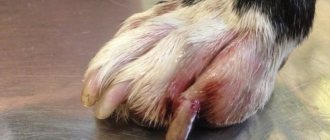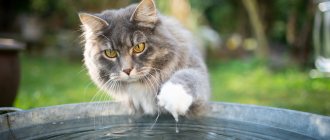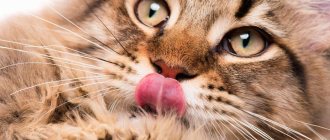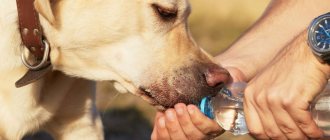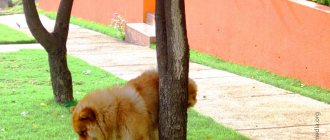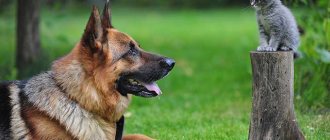Most dogs don't like cats, and there are many different reasons for this. These pets often do not make friends due to differences in behavior, character and due to differences at the instinctive level. But it often happens that a kitten and a puppy have been in contact since childhood and behave like real friends. If the owners decide to have both animals in the house at the same time, then it is worth paying attention to some recommendations that will make the process of getting to know each other and establishing relationships easier and faster.
Competition between species
Since ancient times, these two species have competed with each other for territory and prey. Both species are predators, therefore, living in the same territory, they had to constantly clash with each other in confrontation for food and territory. All representatives of the cat family (with the exception of cats themselves) are larger in size than representatives of the canine family. In a one-on-one confrontation, dogs lose to cats, and they have to share prey and territory. But against a pack, lonely representatives of the cat family have no chance. Therefore, even now, wild representatives of these two species in nature are irreconcilable enemies and clashes in the vast expanses of the savannah or jungle are not uncommon.
© shutterstock
Instinctive experience in cats and dogs
When a puppy first appears in the house, he hurries to explore every corner, diligently sniffing everything in his path. Curiosity completely erases fears. And even a small kitten is in no hurry to move through unfamiliar territory, carefully studying the close space surrounding it.
Caution is in the blood of cats
Seeing a cat on the street, the dog immediately rushes to meet a new potential friend. And if a frightened cat hits him in a vulnerable place (for example, on the nose), then the dog will forever remember such a sad and painful experience. It's not hard to guess how he will treat any cat the next time he meets.
It is believed that the distant predecessors of cats were large saber-toothed tigers and lions . They gratified their pride by annoying small wolves and jackals. The canine squad has learned to dislike clawed offenders ever since. Now the latter are reaping the fruits of the actions of their ancestors, forever fleeing from the barking four-legged animals.
We should not forget about the contribution made by man to these relationships. Often the dog’s owner, for fun, baits Sharik into watching the furry “beast” passing by. At the same time, he does not even suspect the consequences for his pet. What if the tailed “bandit” turns out to be more courageous than one might expect?
Aggressive meowing creatures are also rare. Their attacks on dogs are explained by a zealous desire to protect their territory, which they have long marked. This behavior leaves no choice for the dog, causing anger in response.
Interesting: Caracal - description, nutrition, lifestyle, enemies, photos and videos
Behavior
Cats and dogs are different in behavior. A dog is a pack animal. She is used to barking, being active, jumping, running. A cat, on the contrary, is an individual animal and maintains itself alone . An exception may be lions from the cat family, which live in prides. Otherwise, all representatives of the cat family try to stay apart and carefully. Dogs are easier animals to make contact. With puppies and kittens, you can clearly see all these differences. The puppy makes contact more actively, tries to sniff and play with the kitten. Kittens, on the contrary, are active only in their own environment, but with representatives of other species, including dogs, they contact less willingly, on occasion trying to avoid unnecessary contacts, run away, or hide. As a result, when the dog tries to establish a connection, the cat always runs away, which often develops into a chase.
If you can, catch it
Many people think that a cat is faster than a dog, but this is not true. A dog can reach speeds of up to 60 km/h, while a domestic cat is only 40 km/h. But a cat has many undeniable advantages: maneuverability, at maximum speed it perfectly runs around all obstacles, while a dog at high speed does not notice objects and can crash into a tree or pole.
The dog runs only on the ground, while the cat easily jumps on obstacles in the form of a car, tree, fence, so chasing it does not bring results. The dog has almost caught up with her, and suddenly the cat, making one jump, finds herself out of reach.
Of course, when animals meet in an open area, the cat cannot escape. The cat is not designed to run long distances, it is an excellent hunter, it watches over the prey, then, having precisely calculated the jerk, pounces on the mouse, but the prey cannot escape from its sharp claws.
A dog can pursue game for a long time and stubbornly, running many kilometers at high speed, driving the victim to the point of exhaustion.
Dogs don’t eat cats and don’t see them as food, but if an embittered dog catches up with a cat, he can give her a great beating and even cause irreparable harm to his health, but the dog won’t be in any good shape either and may well get hit by the claws of a brave cat, who knows whether he’ll be happy dog to his triumph. If the cat behaves indifferently and does not deliberately provoke the dog, then the dog will not chase it.
Hunting instinct
The zeal of dogs for cats can also be explained by the hunting instincts inherent in many breeds. For such dogs, many animals are regarded as potential prey, regardless of whether the cat is a raccoon or a fox, therefore, in dogs, the hunting instinct is triggered, and in cats, the instinct of self-preservation begins and the chase and hostility begin.
© shutterstock
Smart but different
If you ask about the mental abilities of animals, most people will say that, of course, a dog is much smarter than a cat. They perfectly follow commands, are obedient, they can even distinguish the words and mood of the owner, the pack lifestyle has affected the dogs’ communication skills, they are good companions, dogs can predict where an object is located and the speed of its movement. A hungry dog will get to food faster.
If a dog gives a voice when commanded to lie down or attacks an opponent, this does not mean that it is smarter. The cat will never obey the owner's commands; if only its desires coincide with the owner's command, it will obediently complete the task. Dogs recognize their reflection in the mirror, but may not recognize the owner if he comes in different clothes and smells unfamiliar. A cat cannot recognize itself in the mirror, but it will never confuse its owner.
Both animals are perfectly oriented in space and easily find their way home, but the cat has more possibilities. She can run not only on the ground, but also climb fences and tall trees, because, unlike dogs, she lives in three-dimensional space. Dogs are extroverts, love to show their emotions, and tend to get closer. Cats by nature are introverts, completely immersed in their own world, closed and not inclined to communicate.
The cat has proven its intelligence by surviving in extreme conditions all alone, in which a dog can survive only as part of a pack. Only after people know the thoughts of animals will it be possible to confidently say who is smarter.
Unaccustomed to each other
Some people believe that the enmity between cats and dogs is fictitious and is an ordinary fairy tale that we are accustomed to since childhood. Indeed, it is enough to carefully look at the behavior of cats and dogs living together in the same territory. For example, a kitten and a puppy growing up together will not have conflicts in the future. You can often see that even yard cats and dogs get along well together and have no conflicts with each other, but strangers, cats or dogs, who covet their food or territory immediately become an object from which this food and territory should be protected.
Is peaceful cohabitation possible, and how can it be achieved?
- You need to start acquaintance between a dog and a cat gradually. Under no circumstances should you put pressure on the “younger” pet. It is especially not recommended to hit or scold an animal, even if it shows distrust or aggression.
- Keep your cat and dog in separate rooms. The pet must understand that he has a safe place. Well, in order for him to get used to the new neighbor, you need to show things taken from the cat or dog’s room, respectively.
- Animals must be fed separately. For them, this is an indicator of hierarchy. So the one who lives in the house the longest should receive his portion first.
- The “older” pet should not feel deprived of love, much less betrayed. Be sure to play with it, spend more time than with a new one.
If you don’t know how to reconcile a cat and a dog, then we have material that will help reconcile your pets.
Read here. By following these simple rules, you can accustom your dog and cat to each other. But if communication between pets becomes difficult due to their negative reaction to each other, be sure to involve a professional dog handler in the process. It is possible to correct the behavior of canines, but convincing a cat not to behave aggressively is much more difficult.
Resentment
Or maybe the cause of the conflict between dogs and cats is ordinary resentment? The cat could scratch the dog’s face with its claws, and we know dogs have good memories, so the dog is trying to pay off the offender for the wounds he once inflicted . But maybe the situation is the opposite? All representatives of the cat family are larger than their opponents. And lions, tigers, and leopards were always not averse to chasing wild dogs, jackals and wolves. They, in turn, could only respond by gathering in a flock. This is where the hostility of the two species arose, which was passed on through the genes of domestic cats and dogs.
War is war, but lunch is on schedule
Try to behave as usual - do not raise your voice, pretend that you are doing important things, but at the same time sneak glances at the tailed couple. You must do everything to make sure that the animals’ fear goes away and their stress level decreases. Remember that the condition of pets largely depends on how people behave. Therefore, if you do not behave strangely - run around the rooms screaming loudly, try to offend them, then your tailed friends will feel calm.
Main reasons: nature or provocation?
Most fighting and hunting dogs chase cats for the sole purpose of killing. Such animals perceive mustachios as prey at the level of unconditioned reflexes, so they are often not aware of their actions. But it is interesting that in a fight between cats and dogs, the largest one does not always win. Sometimes the cunning, resourcefulness, and tough temperament of a purr can drive man’s four-legged friend into a corner and even take off running.
Territory protection
Since ancient times, the dog has been considered a reliable guard, not only of the owner’s territory, but also of his personal space. The cat, although not a pack animal that loves to walk on its own, also prefers clear boundaries. Therefore, a kind of confrontation arises between four-legged friends for territory. In this case, not only the dog rushes at the cats, but also vice versa.
Hunting instincts
In order for the hunting nature of your four-legged friend to fully manifest itself during a walk, but not in relation to the kitten, dog handlers recommend using a laser pointer as a hunting target.
The unconditioned reflex to hunting is especially developed in the corresponding breeds. For such animals, a simple walk will not be enough. Therefore, the dog will run after the cats, getting ready to hunt. Often in such cases, dogs simply bite the purr to death. Sometimes a cat will run away if it sees a more menacing animal on the way with its tail held high and wagging. But if the furry is also in a hunting mood, and there is a desire to defend the territory, the cat will rush at the dog itself.
Boredom and desire to communicate
Dogs, or rather puppies, love to chase cats for fun. At the same time, the language of communication between animals is different: for four-legged hunters, a raised tail and wagging, a curved back towards the front legs are a sign of a desire to get to know each other and communicate, which is regarded by a cat as aggression. Conflict arises due to misunderstanding. Sometimes a puppy attacks kittens because of his own pampering. Often the cat arches its back, hisses and extends its claws. Such a meeting frightens the dogs, which is why the reaction on the next occasion will not be so friendly.
Read also: Platinum is cheaper than gold
Hidden resentment
The following situations can provoke such a powerful feeling:
If after meeting the furry dog he immediately dislikes the dog, then the latter, if possible, will take revenge on him.
- Unsuccessful first meeting with a purr, when he attacks instead of getting to know him by sniffing.
- Anger at the owners who got a fluffy dog and pay more attention to him than to the dog.
- Deviations in the psyche, when animals can behave inappropriately, receive a “scolding” from the owner for this, which will further fuel the instincts of attack.
Return to contents
Other reasons
- Increased self-esteem. The dog chases the cats in order to show “who’s boss,” that is, strength and advantage.
- Provocation. Often the purring comes from the side. They do everything they can to provoke the dog. In this case, the fluffy is not afraid and does not run, but can sit next to him and play with the dog’s tail or a flying fly.
Return to contents
Foraging
Competition for food and edible waste was most often one-sided. Dogs occupied a more advantageous position when they were close to people. Cats had to rely on their natural agility to avoid various troubles.
Guardian correspondent John Bradshaw once studied the behavior of wild cats in a Turkish village. One year, cats were everywhere and obtained food by begging for it from local residents and tourists. The following year, packs of dogs were already roaming the streets, and the journalist got the impression that the cats had disappeared. He thought so until he looked at the village from above and saw that the cats had simply moved onto the flat roofs. Most likely, they went down in search of food at night when the dogs were sleeping.
